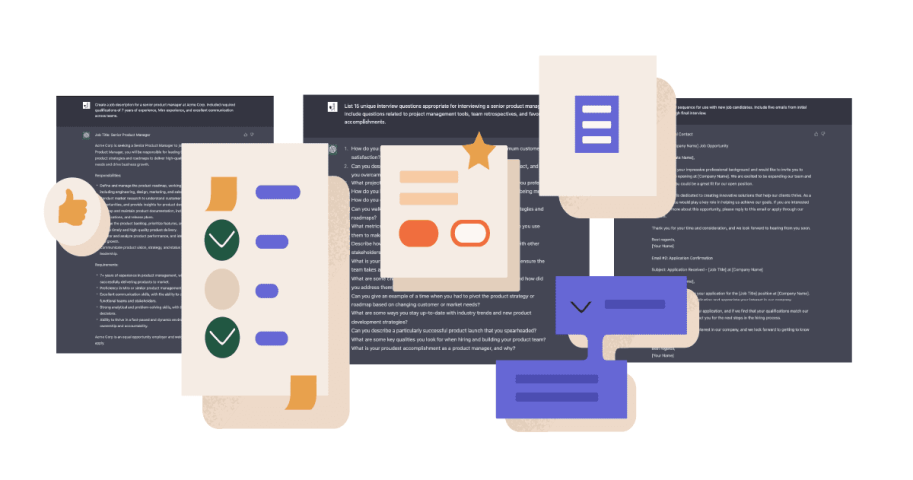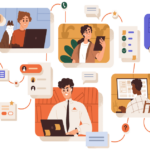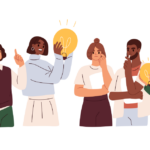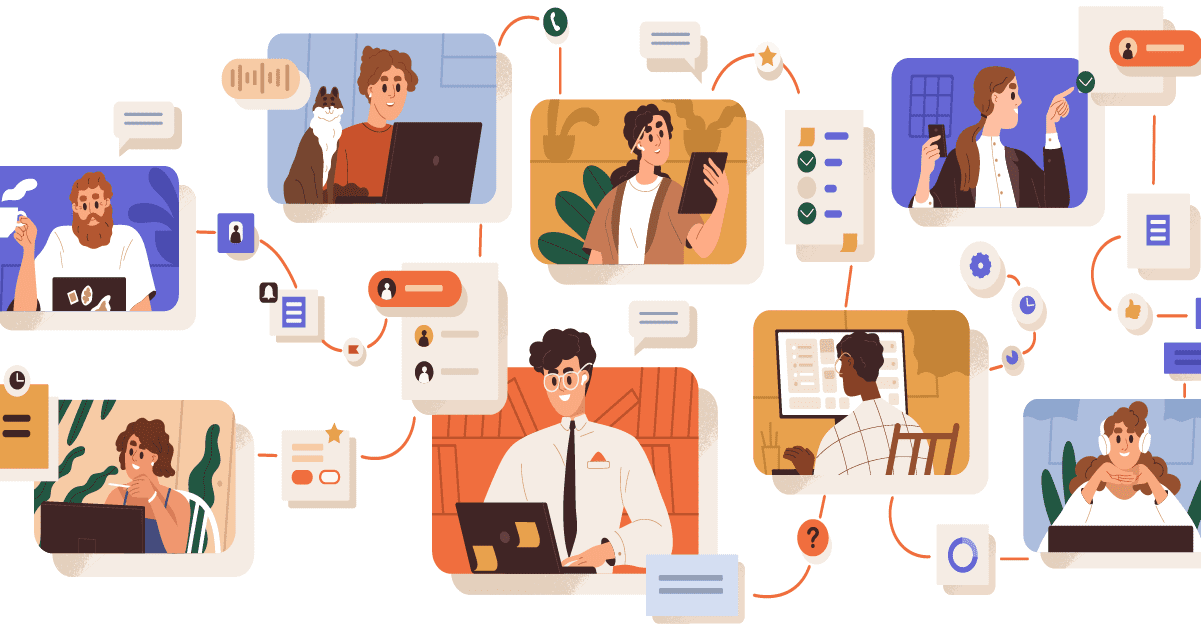- Jobble
- February 15, 2023
You’ve seen ChatGPT and AI-generated content all over the news, your LinkedIn feed, and maybe even your personal social feeds.
The truth is, tools like ChatGPT are revolutionary—and they’re here to stay. Microsoft has invested heavily in the company behind ChatGPT, OpenAI, while Google invested over $300 million in the bot’s primary competitor, Bard. A paid subscription model was recently announced at $20/month for premium ChatGPT access during peak hours.
It’s all for good reason: artificial intelligence makes work a lot easier if you know how to use it effectively. For HR professionals, hiring managers, and other employees involved in hiring, ChatGPT can speed up the hiring process considerably.
Before we dive in, there are a few things to remember when using ChatGPT for anything work related:
- ChatGPT content is a starting point. It’s best at generating and editing outlines, keywords, paragraphs, tables, and more.
- You should check all its content for plagiarism and accuracy. This AI sources information from existing content on the internet, so you’ll want to make sure it’s unique and accurate. This can be a little trickier with hiring and HR content, given that job descriptions routinely use the same copy. Use your best judgment and always attribute your sources.
- ChatGPT isn’t connected to the internet. You can’t ask it to access live URL’s.
- It’s an artificial intelligence, so it has no opinions. You should only ask ChatGPT for content that is based in fact. If you ask it for an opinion, you’re only slowing yourself down.
- The output is only as good as your input. Your prompts should include as much information as possible to reduce the number of corrections the ChatGPT will need to make to its first answer.
With all those in mind, let’s look at how to speed up the hiring process with ChatGPT:
- Create job descriptions
- Edit text for clarity and brevity
- Generate better interview questions
- Plan email communications
- Improve the tone of your writing
- Write offer letters faster
- Quickly create rejection letters or emails
- Create better feedback forms
- Generate training and development plans
- Optimize any content for search engines
- Bonus: How to get better answers from ChatGPT
1. Create job descriptions
Spinning up job descriptions quickly and at scale can be challenging if you have to brainstorm, source, and format each one. Luckily, ChatGPT does all of that for you.
Suggested prompt: Create a job description for a [seniority] [job title] at [company name]. Included required qualifications of [x], [y], and [z].
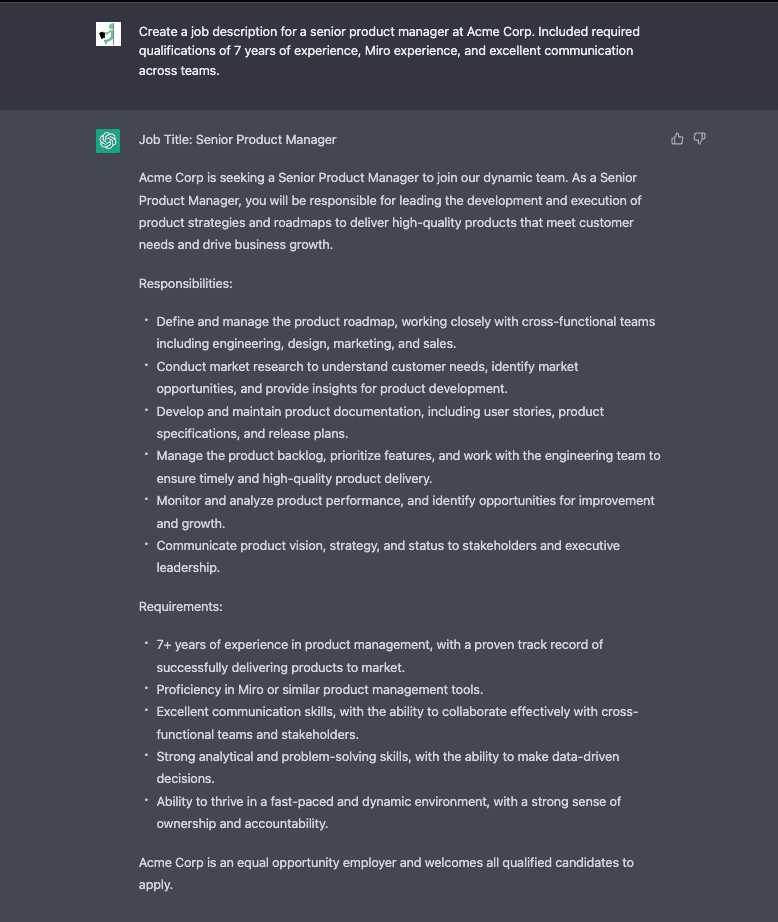
2. Edit any text for clarity and brevity
If you already have a lot of job descriptions or questions prepared, you can save time by pasting them into ChatGPT with instructions about what to edit.
Suggested prompt: Edit the following text for clarity and brevity. Follow your edits with suggestions on what else could be added. [paste your text]
3. Generate better interview questions
You probably have a standard list of questions to ask candidates, but ChatGPT can help you think of unique questions related to specific roles, areas of expertise, or interests.
Suggested prompt: List 15 unique interview questions appropriate for interviewing a [seniority level] [job title]. Include questions related to [skill], [interest], and [accomplishment].
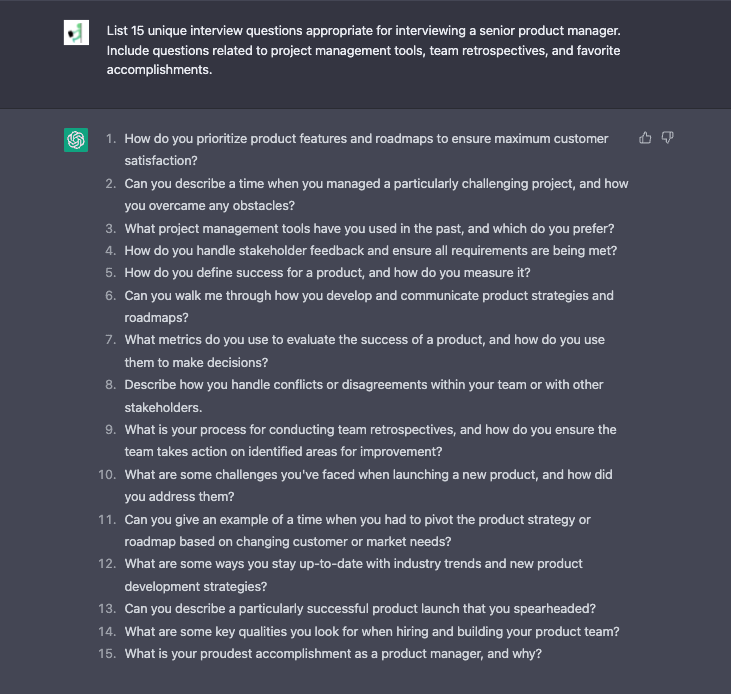
4. Plan email communications
ChatGPT can help you write emails that you would normally send back and forth to schedule appointments with candidates.
Suggested prompt: Write an email sequence for use with new job candidates. Include five emails from initial contact through final interview.
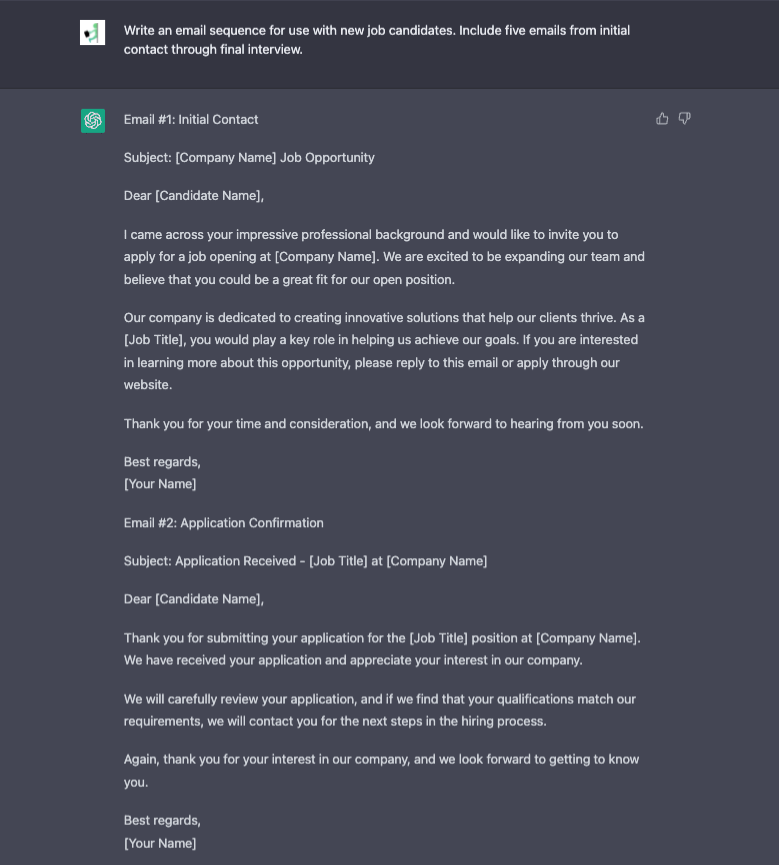
5. Improve the tone of your writing
Sometimes, it can be tough to know if your writing fits your company’s style guide—especially when you’re trying to manage a large pipeline of candidates. With a quick copy and paste from your brand guide, ChatGPT can help you make sure your writing gets your message across the right way.
Suggested prompt: Rephrase the following text to ensure it follows the brand guidelines of [brand guideline 1], [brand guideline 2], and [brand guideline 3].
6. Write offer letters faster
Need to snag the perfect candidate fast? Generate an offer letter in seconds.
Suggested prompt: Write an offer letter for a [seniority level] [job title] that includes the following data: [starting salary], [start date], [remote work, hybrid, or on-site work], medical, vision, and dental benefits, and [any additional benefits].
7. Quickly create rejection letters or emails
Many companies don’t send rejection letters or emails anymore; they’re too busy to keep up with the hundreds of applicants they get for each role. However, candidates are a lot more likely to apply to you again (and recommend you to people in their network) if they feel respected from start to finish. With a well-worded rejection email, you can save time and keep good contacts warm for future roles.
Suggested prompt: Write an email rejection for the role of [job title] at [company name]. Use a respectful tone and indicate appreciation for the candidate’s efforts in the process thus far.
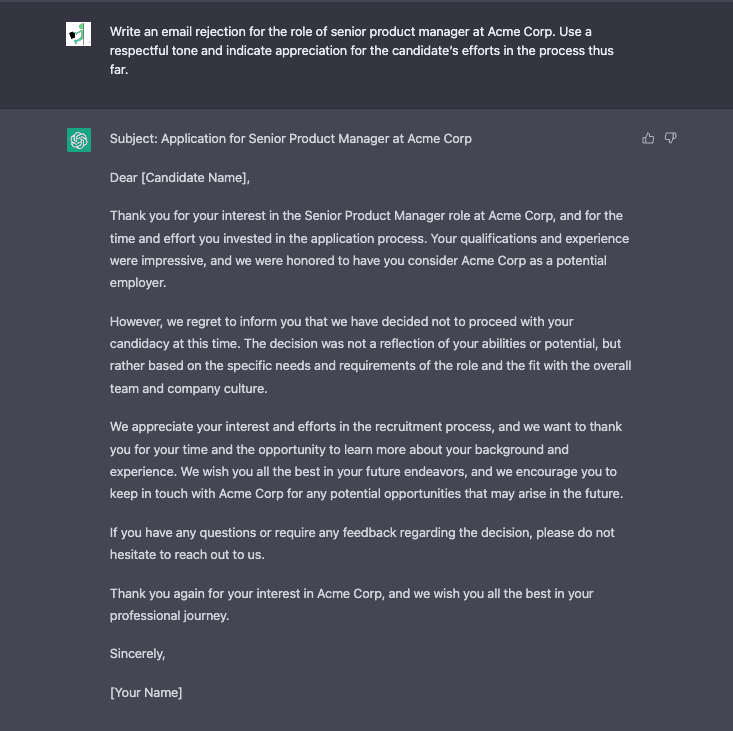
8. Create better feedback forms
If you want to get input from successful candidates (or people you rejected) about their experience with your hiring process, ChatGPT can help you create survey questions quickly.
Suggested prompt: Create a list of 25 questions for a hiring process feedback form. The audience should be the external candidate, not the interviewer.
9. Generate training and development plans
If you need help creating better training and development plans, ChatGPT can help.
Suggested prompt: Create a training and development plan for a [seniority level] [job title] in the [industry] industry.
10. Optimize any content for search engines
Web content should be optimized for human users and robots. Artificial intelligence platforms are built using something called natural language processing (NLP). When content on the web follows structures that NLP tools are familiar with, they’re more likely to be ranked higher and appreciated by search engines. All that to say, optimizing your content with NLP phrasing can increase the likelihood of it being seen by more people.
Suggested prompt: Edit the text below to be NLP-optimized.
How to get better answers from ChatGPT
To optimize your interactions with ChatGPT, consider the following tips:
- Clearly state your target audience to improve the relevance of ChatGPT’s responses.
- Indicate the desired length or format of your output (e.g. list of 10 items).
- Provide specific instructions to edit or enhance previous responses (e.g. add certain details or switch to a different tone).
- Request a rewrite in a specific style to align with your brand voice (e.g. mimic a famous person).
- Use clear and concise language when asking questions to improve the accuracy of ChatGPT’s responses.
- Provide relevant context or background information to help ChatGPT understand your request better.
- Use specific keywords to guide ChatGPT to find the information you need.
- Consider rephrasing your questions if you don’t get the desired response, as ChatGPT might have misunderstood your initial request.
By following these guidelines, you can maximize the effectiveness of your interaction with ChatGPT.
ChatGPT can speed up your hiring process by expediting your brainstorming, content creation, and editing. The best part? With all that content ready to go, you can get great candidates faster. Find out how Jobble can help you hire the right people.
Elevate Your Staffing Skills: Become an Expert Today!



